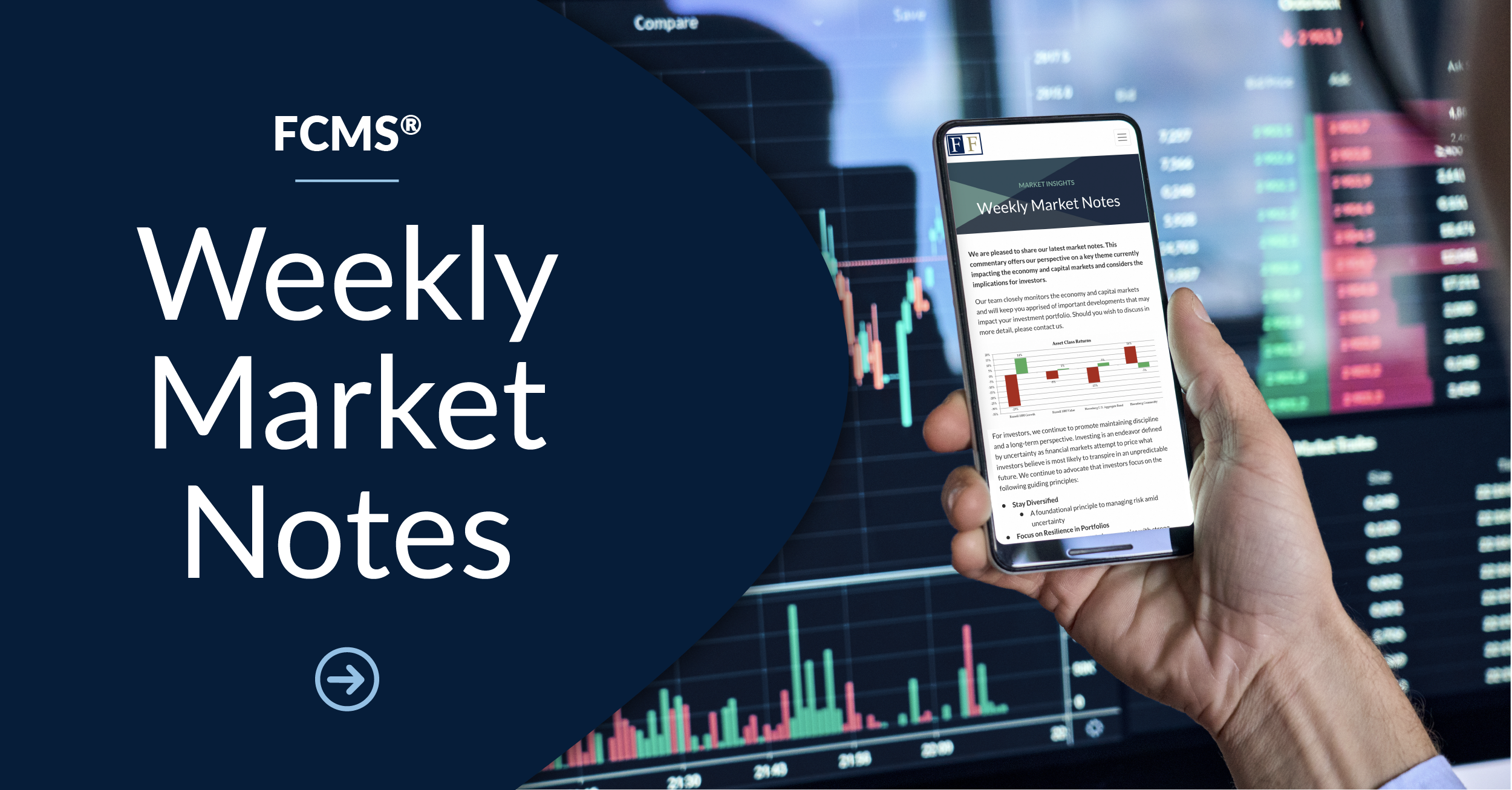Market Review & Outlook
From Post “Liberation Day” Crash to Record Highs
Financial Markets Took Investors on a Roller Coaster Ride in the Second Quarter
After plummeting nearly 19% in response to the larger-than-expected tariffs announced by President Trump on “Liberation Day”, the S&P 500 staged an historic rally and rebounded over 20% in only 54 trading days, finishing the second quarter at record highs. Despite the onslaught of newsworthy headlines that captured the attention of investors from tariffs to Iran to another U.S. government debt downgrade, markets climbed the proverbial wall of worry with the S&P 500 rising nearly 11% in Q2 and posting a 6% gain for the first half of the year.
The second quarter was a textbook case study in the importance of investors staying disciplined and avoiding the perils of market timing (see chart below).
Maintain Discipline: Missing the Best Days Can Prove Costly Over the Long Term
Financial Market Gains Were Broad-Based in Q2 with Some Notable Changes from Last Quarter
Long-maligned international stock markets once again outperformed their U.S. counterparts as investors gravitated to the relative stability of international equity markets. International markets have also benefitted from a weakening U.S. dollar with the U.S. Dollar Index (DXY) declining nearly 11% in the first half of the year.
In a notable reversal from Q1, U.S. growth stocks sharply outperformed their value counterparts during the quarter with the Russell 1000 Growth index rising nearly 18% compared to a less than 4% rise in the Russell 1000 Value index. The mega cap U.S. technology darlings (aka Magnificent 7) that dragged the market lower in Q1 rallied sharply in Q2, leading U.S. stock market indices higher.
Fixed income markets rose modestly in Q2 but meaningfully lagged the gains in global equity markets. Through the first half of the year, bond markets have been a relative source of calm amid the volatility in stock markets. Interest rates remain elevated relative to recent history but have been mostly rangebound despite concerns about the long-term impact of rising fiscal deficits in the U.S. and uncertainty around the timing of the next move to lower interest rates by the Federal Reserve (Fed).
Investment Outlook
With so many geopolitical crosscurrents confronting investors of late, how have global equity markets defied the odds, with many setting record highs last quarter?
Despite the political headlines and tariff-induced uncertainty, the U.S. economy and corporate earnings have remained resilient. Although U.S. GDP modestly declined in Q1, largely driven by a tariff-induced rise in imports, consumer spending has remained resilient. Businesses have proven nimble and so far seem to have weathered the tariff uncertainty by protecting margins and continuing to grow the bottom line.
Inflation has continued to moderate, setting the stage for easier monetary policy from global central banks, which has eased financial conditions and supported financial asset prices. Many major central banks have meaningfully reduced interest rates in 2025, including the ECB. While the Fed has been on hold due to uncertainty around the impact of tariffs and fiscal spending on inflation, market expectations are that the Fed will resume lowering interest rates later this year. Core PCE inflation, which is the index most closely monitored by the Fed, rose 2.7% YOY in May and is nearing the Fed’s 2% target.
During the quarter, the spotlight shifted from the uncertainty of tariffs as a potential headwind to economic growth to expectations of tax cuts and increased fiscal spending in the proposed “One Big Beautiful Bill” to be a potential tailwind for economic growth.
With equity markets again ascending to record highs, what potential risks should investors be monitoring as we enter the second half of 2025?
⚫️ Tariffs – While the view has seemingly taken hold among investors that President Trump’s tariff policy is just a negotiating tactic, there is still much potential uncertainty ahead with the 90-day pause soon set to expire and current U.S. tariff rates already the highest in generations.
⚫️ Fiscal Deficits, Debt, & Interest Rates – With the passage of the “One Big Beautiful Bill” likely, the record
U.S. fiscal deficit is set to expand further and will likely increase an already significant debt load for the U.S. government. The key question for investors is when these trends will reach a tipping point that could result in a sharp rise in interest rates that would destabilize the all-important U.S. Treasury market.
⚫️ The Federal Reserve – With President Trump’s continued pressure on Chair Powell and the Fed to lower interest rates, concerns are rising about the sustainability of the Fed’s independence and the uncertainty that may result when Powell’s term as chairman ends next year.
What’s an investor to do in these uncertain times?
Forecasting economic and market outcomes is notoriously difficult and unreliable, and it is often more helpful to use history to instruct our outlook and actions. While the temptation of assuming this time is different has often led investors to allow emotions to dictate their short-term investment decisions, history has consistently demonstrated the long-term detriment of doing so.
❶ Maintain Discipline & Avoid the Temptation to Time Markets – History shows that investors are poor market timers and that trying to sell assets at the peak or buy at the bottom is usually a losing game. History has also shown that gains in positive years for markets have outweighed the drag caused by negative years, allowing long-term, disciplined investors to grow their investments over time.
❷ Don’t Let Short-Term Emotions Disrupt Your Long-Term Plan – Although the current environment is fraught with uncertainty for investors, the stock market has continued to grow over the long term despite countless crises and unexpected events over the course of time. While history does not repeat, it does often rhyme.
❸ Don’t Let Politics Drive Your Investment Decisions – It’s time in the market, not the president’s political party, that matters over the long term.
Finally, engage with your financial advisor and stay focused on your long-term financial plan.
Want to learn more? Discover more from the FCMS Investment Committee by subscribing to our Founders Insights blog and following us on LinkedIn.
Authored by the Freedom Capital Management Strategies® Investment Team | July 2025
Securities and Investment Advisory Services offered through Founders Financial Securities, LLC. Member FINRA, SIPC and Registered Investment Advisor.
This material contains the opinions of the author(s) but not necessarily those of Founders Financial Securities, LLC and such opinions are subject to change without notice. This material has been distributed for informational purposes only. Forecasts, estimates, and certain information contained herein are based upon proprietary research and should not be considered as investment advice or a recommendation of any particular security, strategy, or investment product. Information contained herein has been obtained from sources believed to be reliable but is not guaranteed. Past performance does not guarantee future results.




